Famously, most Atheists would stick with the belief that there is no God which has defined their status as they doubt the Christian beliefs, the Bible and sometimes the Muslim belief in God too.
From our perspectives so far, God has, however, proved that he truly exists and the Bible is no joke. Through the clues, he has accessed mankind to experience the mystery of his love and ways. Most times, priests, Evangelists, pastors and most anointed personals would lecture amidst the mystery of staying holy and worthy in the arms of God, how it impacts glory and stake mankind higher over others who are away from God as an Atheists.
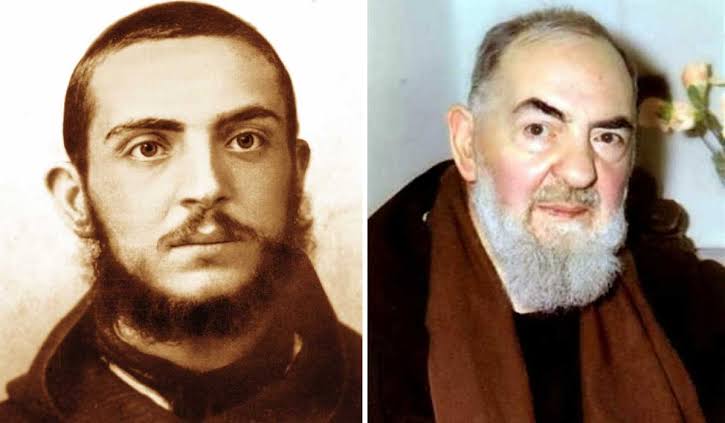
It’s stated: “Sins discrete us from God’s Holiness” this is actually the reason behind our weakness. Sin despise our supernatural gifts from God which are Peace, God’s characteristics, love, vision, humility, wisdom, the power to command and heal, finally, being a Saint at the end of your duration on earth. God is the key to all these gifts but sometimes, it’s pretty much complicated to gain and that’s why the fewer victims who gained such are specially graced by God, however, God’s love is sufficient to every person, even the thieves and the murderers.
Most of the Catholic saints has proved the power of holiness and overcome the law of nature. After death comes decomposition but these saints have proved that it can also swerve to another law of decomposition; they never decayed. A good example of this mystery has emphasised it’s evidence on a catholic priest famously known as Padre Pio.
Pedro Pio
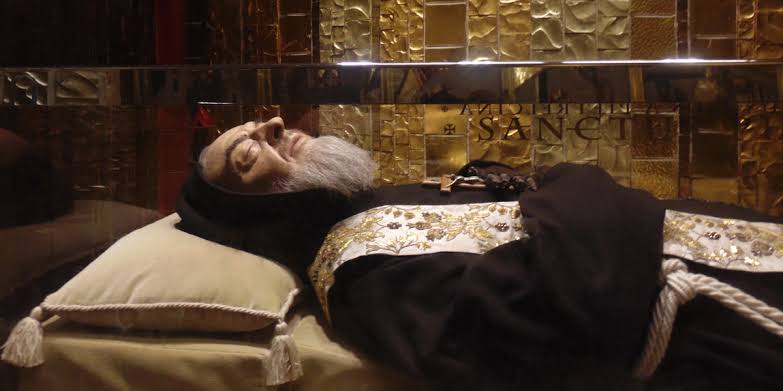
Padre Pio, also known as Saint Pio of Pietrelcina (Italian: Pio da Pietrelcina; 25 May 1887 – 23 September 1968), was an Italian friar, priest, stigmatist and mystic,[1] now venerated as a saint in the Catholic Church. Born Francesco Forgione, he was given the name of Pius (Italian: Pio) when he joined the Order of Friars Minor Capuchin.
Padre Pio became famous for exhibiting stigmata for most of his life, thereby generating much interest and controversy. He was both beatified (1999) and canonized (2002) by Pope John Paul II.[2]
The Sanctuary of Saint Pio of Pietrelcina is located in San Giovanni Rotondo, Province of Foggia, Italy.
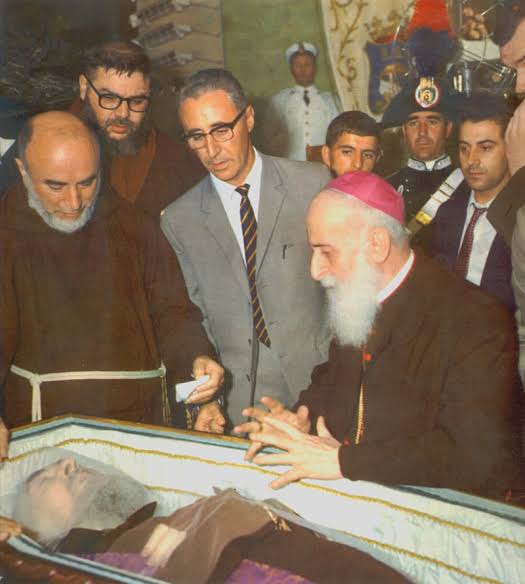
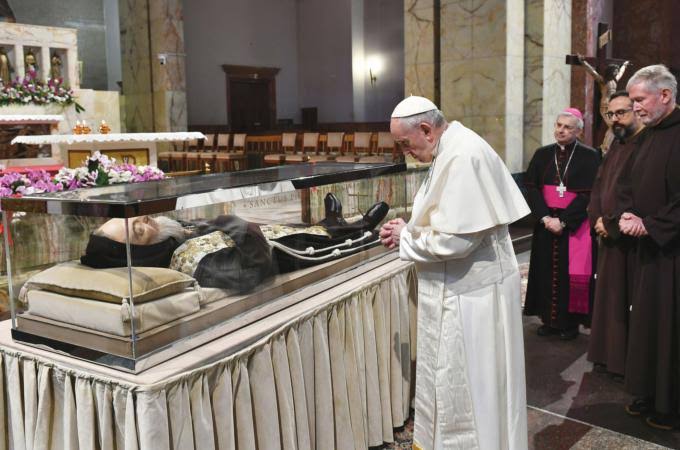
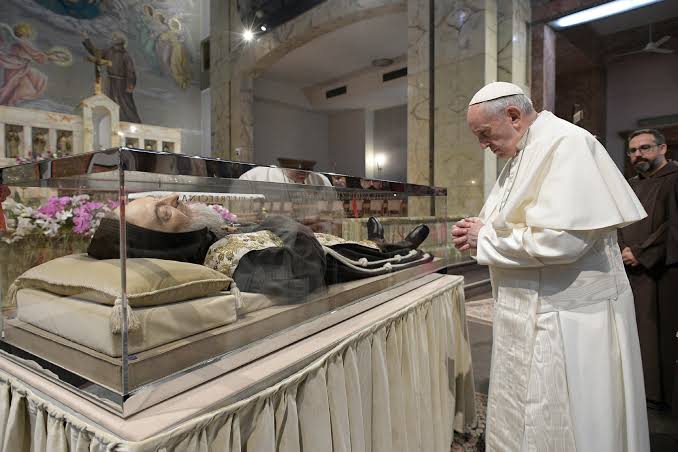
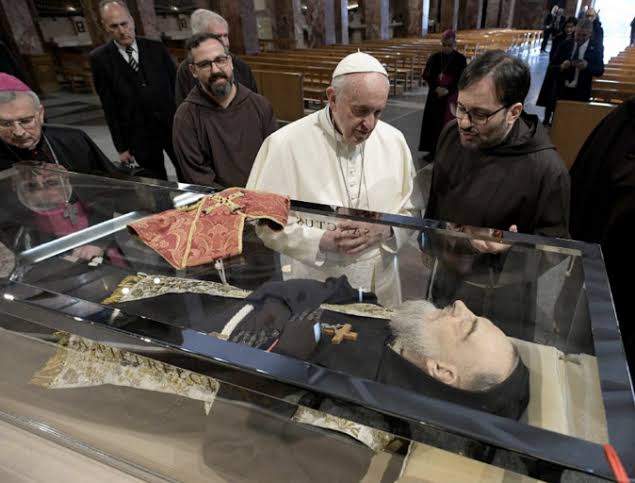
His Early life according to Wikipedia was narrated as follows:
His parents were peasant farmers. He was baptized in the nearby Santa Anna Chapel, which stands upon the walls of a castle. He later served as an altar boy in this same chapel. He had an older brother, Michele, and three younger sisters, Felicita, Pellegrina, and Grazia (who was later to become a Bridgettine nun). His parents had two other children who died in infancy. When he was baptized, he was given the name Francesco. He stated that by the time he was five years old, he had already made the decision to dedicate his entire life to God. He worked on the land up to the age of 10, looking after the small flock of sheep the family owned.[citation needed]
Pietrelcina was a town where feast days of saints were celebrated throughout the year, and the Forgione family was deeply religious. They attended Mass daily, prayed the Rosary nightly, and abstained from meat three days a week in honor of Our Lady of Mount Carmel. Although Francesco’s parents and grandparents were illiterate, they narrated Bible stories to their children.
According to the diary of Father Agostino da San Marco (who was later his spiritual director in San Marco in Lamis) the young Francesco was afflicted with a number of illnesses. At six he suffered from severe gastroenteritis. At ten he caught typhoid fever.
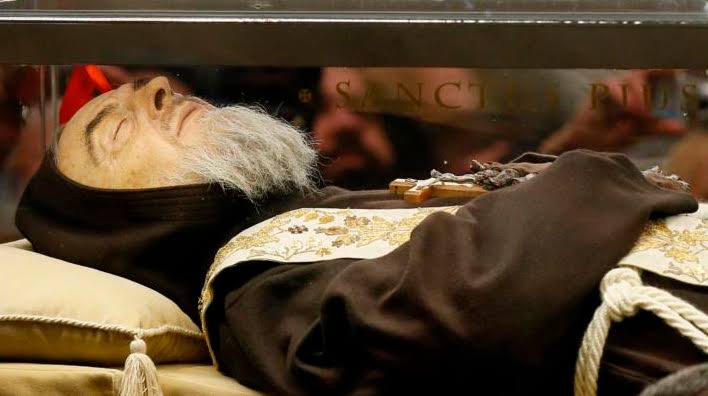
As a youth, Francesco reported that he had experienced heavenly visions and ecstasies. In 1897, after he had completed three years at the public school, Francesco was said to have been drawn to the life of a friar after listening to a young Capuchin who was in the countryside seeking donations. When Francesco expressed his desire to his parents, they made a trip to Morcone, a community 13 miles (21 km) north of Pietrelcina, to find out if their son was eligible to enter the Order. The friars there informed them that they were interested in accepting Francesco into their community, but he needed to be better educated.
Francesco’s father went to the United States in search of work to pay for private tutoring for his son, to meet the academic requirements to enter the Capuchin Order.[3] It was in this period that Francesco received the sacrament of Confirmation on 27 September 1899. He underwent private tutoring and passed the stipulated academic requirements. On 6 January 1903, at the age of 15, he entered the novitiate of the Capuchin friars at Morcone. On 22 January, he took the Franciscan habit and the name of Fra (Friar) Pio, in honor of Pope Pius I, whose relic is preserved in the Santa Anna Chapel in Pietrelcina. He took the simple vows of poverty, chastity and obedience.
Commencing his seven-year study for the priesthood, Fra Pio travelled to the friary of Saint Francis of Assisi in Umbria. At 17, he fell ill, complaining of loss of appetite, insomnia, exhaustion, fainting spells, and migraines. He vomited frequently and could digest only milk and cheese. Religious devotees point to this time that inexplicable phenomena allegedly began to occur. During prayers for example, Pio appeared to others to be in a stupor, as if he were absent. One of Pio’s fellow friars later claimed to have seen him in ecstasy, and allegedly levitating above the ground.
In June 1905, Pio’s health worsened to such an extent that his superiors decided to send him to a mountain convent, in the hope that the change of air would do him good. This had little impact, however, and doctors advised that he return home. Even there his health failed to improve. Despite this, On 27 January 1907, he still made his solemn profession.
In 1910, Pio was subsequently ordained a priest by Archbishop Paolo Schinosi at the Cathedral of Benevento. Four days later, he offered his first Mass at the parish church of Our Lady of the Angels. His health being precarious, he was permitted to remain with his family until 1916 while still retaining the Capuchin habit.
On 4 September 1916, however, Pio was ordered to return to his community life. He moved to an agricultural community, Our Lady of Grace Capuchin Friary, located in the Gargano Mountains in San Giovanni Rotondo in the Province of Foggia. At that time the community numbered seven friars. He remained at San Giovanni Rotondo until his death in 1968, except for a period of military service. In the priesthood, Padre Pio was known to perform a number of successful conversions to Catholicism.
As famously known, after several years of abiding to the call of death in a casket under the ground. Catholic personals and scientist discovered that his whole body has decayed but his face was still intact and has not decayed. This was labelled mysterious and they displayed his body in a transparent casket and pronounced such as a place where Christians can come and honour his holiness. Till date, even today, he is yet to decay and remains uncorrupt. What are your views?
Watch video below;



